Meet a Monitor: Karen Jimenez
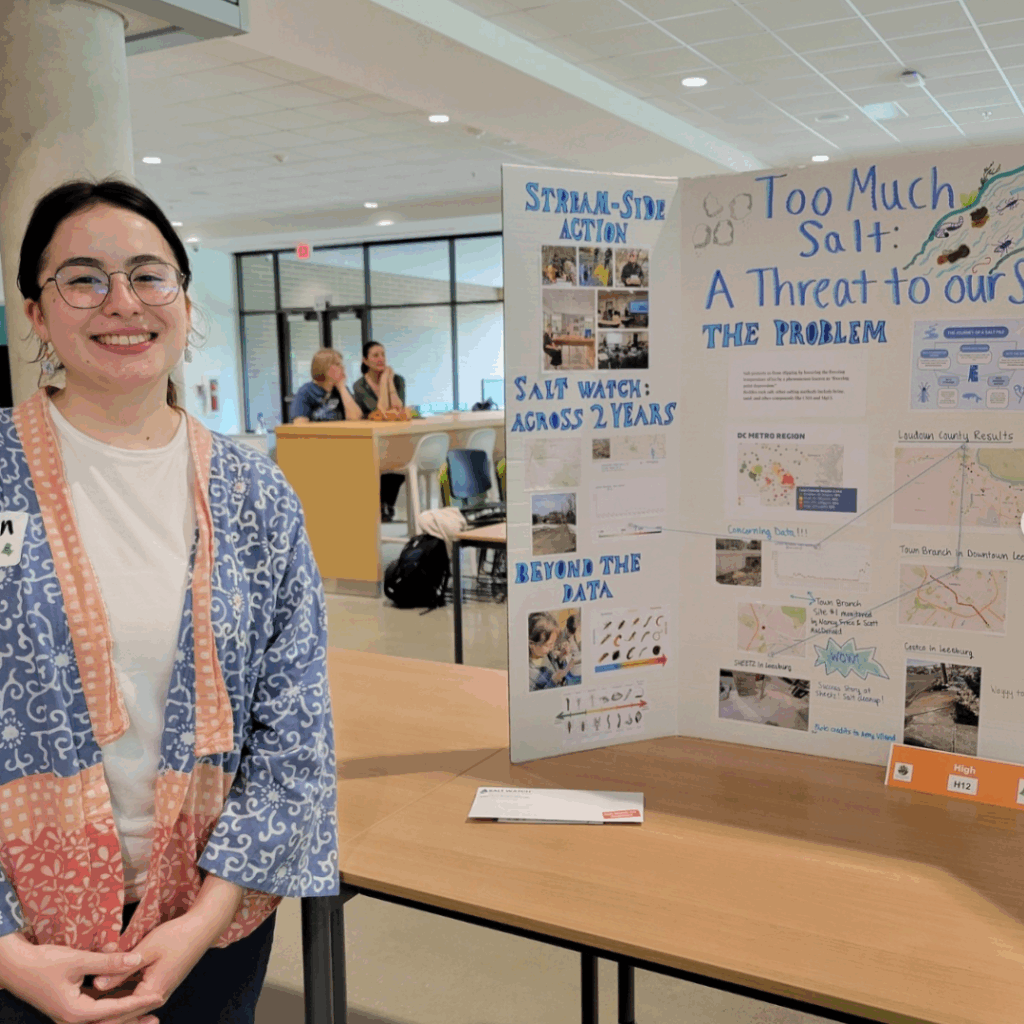
Karen Jimenez, a senior at Loudoun County High School in Virginia, is a shining example of how one passionate individual can make a difference in the fight against environmental pollution. Karen’s journey into environmental activism began with the Virginia Soil and Water Conservation District Youth Conservation Leadership Institute project.
Road salt pollution: A silent threat
Initially, Karen had a general interest in the environment and pollution. Through her leadership project, she was introduced to a specific and pressing issue: road salt pollution. Amy Ulland, the Stream Monitoring Coordinator at Loudoun Wildlife Conservancy, became Karen’s mentor, guiding her through the complexities of water quality monitoring, including the impact of road salt. Under Amy’s mentorship, Karen discovered the Izaak Walton League of America’s Salt Watch program, which allows community members to monitor chloride levels in local waterways. Its accessibility and the upcoming winter season made it the ideal tool for Karen to collect baseline data and observe road salt pollution spikes within the streams. Karen quickly became a dedicated Salt Watch participant, understanding the importance of raising awareness about this critical issue. “To bring all my knowledge and all the data that I’ve collected to people and just to see them realize that this is kind of one of the biggest problems in our community right now is really cool to me,” Karen shared.
Spreading the word: Smart salting practices
Karen’s commitment extends beyond data collection. As part of her Youth Conservation Leadership Institute project, she’s been actively engaged in outreach and education. Her project, titled “Smart Salting to Save Our Streams,” earned her first place in the High School Division and she received a Communicator Award at the Loudoun Student Environmental Action Showcase (SEAS) in 2025 hosted by the Loudoun Environmental Education Alliance. She has even presented information about her study sites and the impact of road salt pollution at the Loudoun Soil and Water Conservation District Director’s Meeting in March 2024.
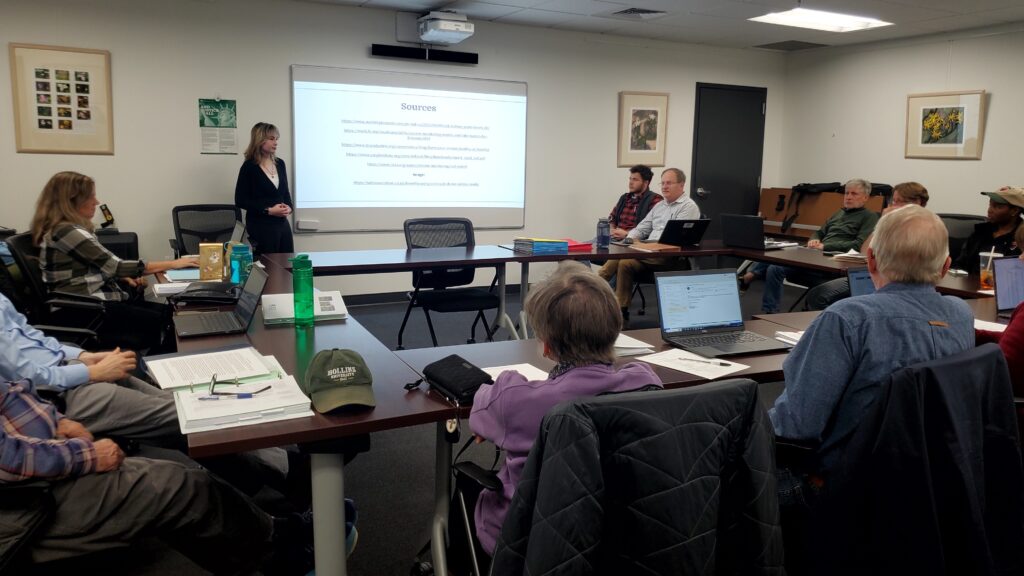
Amy Ulland recalls, “I mentored Karen Jimenez, a participant in the Youth Conservation Leadership Institute, on a Salt Watch project in her neighborhood. Karen collected monthly and winter weather-related data and noted stormwater outfalls, showing how road treatments affected chloride levels in the tributaries. Karen presented her project to the Loudoun Soil and Water Conservation District Board, the Youth Conservation Leadership Institute cohort, and at the Loudoun Student Environmental Action Showcase. Her poster included information about salt pollution and preventive measures people can take. The cool part about the Showcase was that I was in a different part of the very large room with a live [benthic] macro[invertebrate] table and a kid came over and said ‘Oh hey! These are those macros that get killed off by road salt! These guys are so cool, they shouldn’t be dying!’”
Karen’s presentations and conversations with community members have highlighted the effectiveness of educating individuals about smart salting practices. She emphasizes that addressing this issue requires a collaborative, community-wide effort. “Our water is… a limited resource. We’re not always going to have it, and we really do have to protect it,” she warns. Polluted freshwater sources can impact drinking water, and as Karen notes, many people only become concerned when faced with those problems. Protecting freshwater, she argues, safeguards not only human health but also countless ecosystems and species that rely on it.
Deeper connections: Understanding the land
A profound takeaway for Karen from her Salt Watch monitoring was a deeper appreciation for the land she lives on. Observing the streams and tributaries behind her neighborhood sparked a desire to learn about the history of the area.
“It kind of made me want to learn more about the history of the land I’m on. And that really fascinated me because I couldn’t help but think about how this was before…Like this is a tributary that [Indigenous Peoples] had to rely on…and we typically don’t really appreciate the nature that’s around us and how…we’re on ancient and historic land.”
“It’s just really interesting learning about the history and then just knowing that the Creek and the tributaries and the streams played a huge role in fostering this environment and creating these kind of communities for people.”
Karen Jimenez
The power of small actions and a bright future
Karen emphasizes the importance of “micro connections” in fostering change and awareness about pollution issues within communities. She commends the work of organizations like Loudoun Wildlife Conservancy and their dedicated volunteers. These efforts, coupled with individual conversations, inspire more people to get involved. She encourages everyone to participate in conservation efforts, highlighting that monitoring with Salt Watch doesn’t require a huge time commitment, and even a single monitoring session can make a difference. “A small difference is a difference,” she affirms.
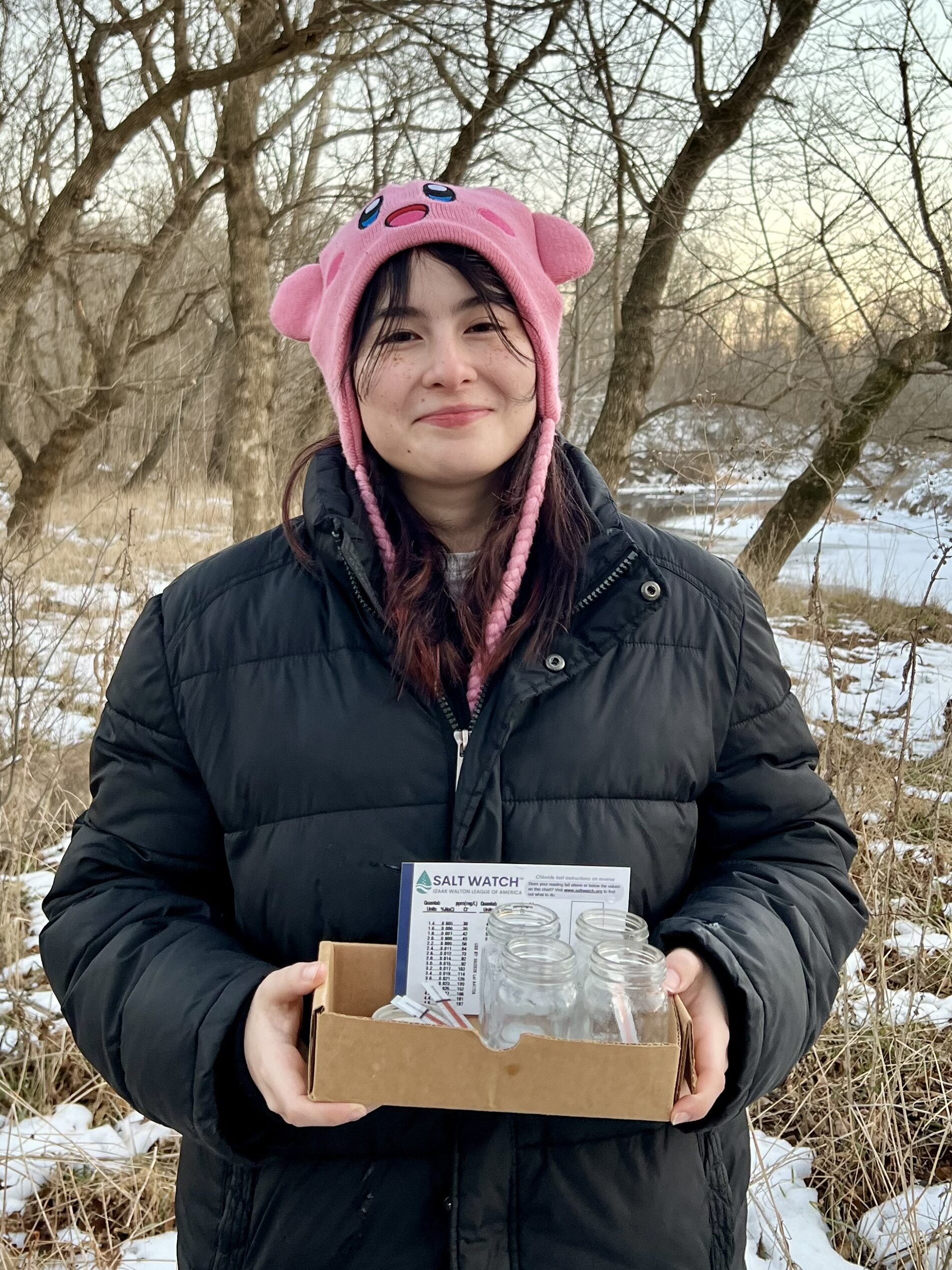
Karen’s newfound passion for water quality and studying water systems has solidified her career aspirations. She plans to pursue environmental science, environmental engineering, sustainability studies, or conservation in college.
“[Monitoring with Salt Watch] really inspired my career…I think I knew that I wanted to do something in environmental science…but I didn’t know what. So, I think just going there and actually testing, getting my boots dirty and just being there with the water made me realize that, you know, this is something I’m really passionate about.”
Karen’s story is a testament to the impact that young people can have in addressing environmental challenges. Through dedication, education, and community engagement, she’s working to protect our precious freshwater resources, connecting people to the land they are on, and inspiring others to do the same.
Photo Credits: Karen Jimenez
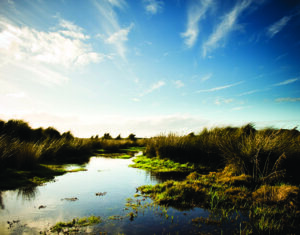
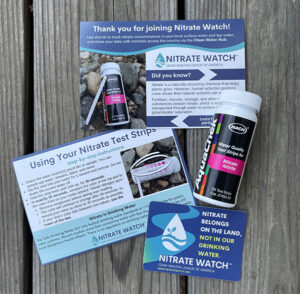 Your kit will include a bottle containing 25 nitrate test strips which you can use to test your water source(s) throughout the year. You’ll also receive postcards explaining how to use your nitrate test strips and how to share your Nitrate Watch results on the Clean Water Hub.
Your kit will include a bottle containing 25 nitrate test strips which you can use to test your water source(s) throughout the year. You’ll also receive postcards explaining how to use your nitrate test strips and how to share your Nitrate Watch results on the Clean Water Hub.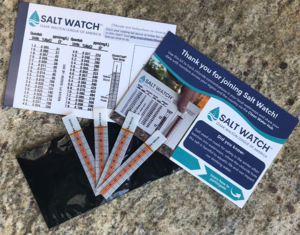 Your kit will include four test strips so you can test your waterway throughout the season. You’ll also receive a chart to help you interpret your results and a postcard with instructions for completing a Salt Watch test and reporting your findings.
Your kit will include four test strips so you can test your waterway throughout the season. You’ll also receive a chart to help you interpret your results and a postcard with instructions for completing a Salt Watch test and reporting your findings.